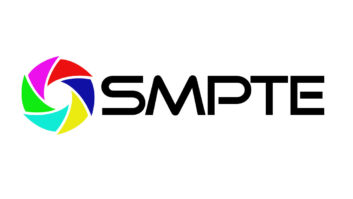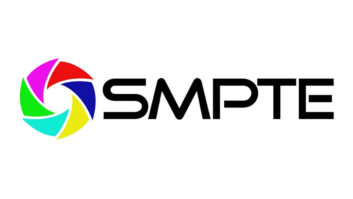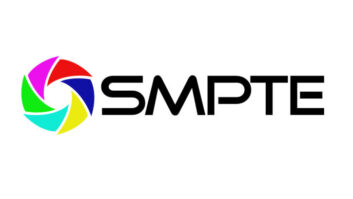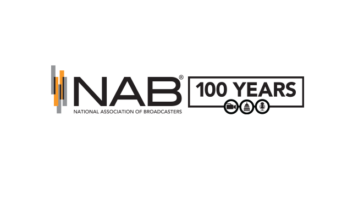J. Patrick Waddell, Standards and
Regulatory Manager, Harmonic, Inc.
By Mel Lambert. | content-creators.com

Following its recent passage through the Senate, by early next year it is expected that the Commercial Advertisement Loudness Mitigation/CALM Act will action the Federal Communications Commission to put into place important measures that – at long last – will ensure consistent loudness between programming and commercials, as well as between content providers. With the CALM Act mandating use of the Advanced Television Systems Committee’s recommended practices for measuring and setting audio loudness, it was timely that the SMPTE Annual Technical Conference & Expo, held recently at the Hollywood Renaissance Hotel, addressed this thorny problem and also considered what is happening in European and other territories, where material generated in the US will need to conform to potentially conflicting standards.
“Since the ATSC published its A/85 [Techniques for Establishing and Maintaining Audio Loudness for Digital Television] recommended practice last November,” J. Patrick Waddell from Harmonic Inc. pointed out during his presentation entitled Audio Loudness – A Status Report on Standardization Industry Adoption, “the committee has held two seminars on the document, and a number of other seminars have served to educate the industry, at least here in North America. After all, annoying consumers is not the way for networks and content providers to sell their material. In Europe, the European Broadcasting Union [the local equivalent of our NAB] had gathered a group of audio experts into P/LOUD, which has reached similar, but different, conclusions on a number of loudness-related topics.”
A/85 covers all facets of an audio-delivery system, from implementation of key ATSC standards to control-room monitoring, metadata management, dynamic range control and the consumer experience. In summary, the RP states that, in cases where content doesn’t contain metadata, material should be mixed to a loudness level in which the anchor element (nominally the dialog content) averages -24 LKFS, ±2, using meters that follow BS.1770 standards. The EBU, in contrast, wanted to rename the LKFS designation as LUFS – to designate Loudness Units – and a recommended level of -23 LUFS; in addition, it planned to include the LFE channel in loudness measurements, and added gating parameters to the 1770 standard. But Waddell was able to report that the first two suggestions have been rejected by the ITU international standards organization, which has also agreed to set up a study group to consider the EBU’s LFE addition – “the ATSC expects that it will make very little difference to the measurements,” Waddell offered – plus its gating suggestions. “Monitoring levels used in control rooms are also vitally important,” he concluded. “A/85 includes recommended playback levels [based on room volume], in addition to calibration waveforms” for setting up such environments.
Fingerprinting for solving A/V synchronization Issues, by Marco Lopez from Miranda Technologies, described how audio-to-video delays can occur at multiple points in a transmission system from content creation and/or ingest to delivery. “AV fingerprinting offers a simple and effective technology to track and correct lip-sync and related sync anomalies,” considered Lopez, who described how delta-based fingerprints are derived by comparing sequential video frames to develop a one-byte ID per frame, and a one-bit ID per millisecond for the audio tracks, which have been summed to mono and normalized. The resultant 115 bytes/sec can be imbedded within Miranda’s real-time SDI-based AV hardware. At the digital signal’s final destination, a second fingerprint is taken and compared with companion data and appropriate delays added to either audio or video to ensure accurate sync. “The technique can survive typical conversion and processes in a TV system,” Lopez added.
SMPTE recently formed a 22TV Ad Hoc Group/AHG to study various lip-sync standards based on AV fingerprints. A related presentation, Interoperable AV Sync Systems in SMPTE 22TV Lip Sync AHG by Mihailo Stojancic from Zeitera, detailed the use of Miranda-format fingerprints within Zeitera’s file-based workflow, including the generation of the fingerprint, transport and correlation of data held within an IP-accessible central store. “This is an example of successful collaboration on an interoperable, mixed-vendor solution,” Stojancic said, “that can handle both compressed audio/video files and real-time SDI audio/video input.”
Workflows for Embedding Copy Protection Watermarks in Theatrical Soundtracks by Dean Angelico from Verance Corporation comprised a practical demonstration of Cinavia watermarks aimed at pirate recordings made in cinemas using camcorders and similar consumer devices. “The adoption of a standard audio watermark technology for copy protection has generated interest within the post-production community for tools and processes to incorporate the watermark embedding technology within existing environments,” Angelico stated. Cinavia is a required element of the AACS content-protection architecture for Blu-ray media. Replayed on a compliant player, any pirated material will mute within a short period and display a warning message. To date, several dozen films have been released with the Cinavia audio watermark; some 35 million playback devices contain the anti-piracy software.
Chris Carey, EVP of Worldwide
Technical Operations, Paramount
According to the Motion Picture Association of America, the illegal pirating of movies results in a $3 billion loss per year for film studios. During his Industry Keynote Luncheon speech, Chris Carey, EVP of Worldwide Technical Operations at Paramount Pictures, identified several sources of piracy, including peer-to-peer downloads, streaming and cyberlockers. “We saw 5.3 million P2P downloads during the first six months following the release of Star Trek: The Future Begins; files come from camcorders with and without replaced audio soundtracks, as well as ripped DVDs and Blu-ray discs.” The situation will only worsen, Carey offers, with 500 million hand-held devices expected to be in use by 2015 capable of replaying Internet-delivered material. “There are 43 PirateEye [camcorder detectors] in auditoriums, with more to be added.” Piracy is directly linked to high profits, Carey concluded. “For example, MegaUpload is a membership-based cyberlocker with 73 million users, capable of generating” – dependent on the subscription model – “profits of between $25 million and $225 million per year.”








